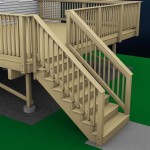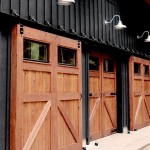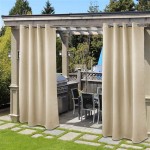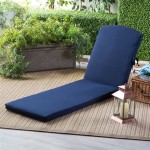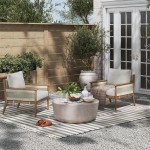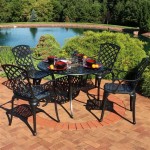Converting an Outdoor Pool to an Indoor Pool: A Comprehensive Guide
The allure of a swimming pool is undeniable, offering recreation, exercise, and a refreshing escape from the heat. However, outdoor pools are inherently subject to seasonal limitations, weather conditions, and increased maintenance demands. Converting an outdoor pool to an indoor pool presents a solution to these challenges, allowing year-round enjoyment and enhanced control over the swimming environment. This article provides a comprehensive overview of the key considerations, processes, and factors involved in such a conversion.
The decision to convert an outdoor pool into an indoor facility is a significant undertaking, requiring careful planning, assessment, and adherence to local building codes and regulations. A thorough understanding of the project's scope, potential costs, and the long-term benefits is crucial before proceeding. The process involves more than simply enclosing the existing pool; it necessitates the creation of a controlled environment that addresses temperature, humidity, ventilation, and structural integrity.
Assessing the Feasibility of Conversion
Before any construction begins, a feasibility study is paramount. This assessment involves evaluating several critical factors. First, the structural integrity of the existing pool must be verified. Any cracks, leaks, or underlying structural issues need to be addressed before enclosing the pool. Failing to do so can compromise the stability of the entire structure and lead to costly repairs down the line. A qualified structural engineer should be engaged to conduct a thorough inspection and provide recommendations for necessary repairs or reinforcements.
Second, the available space surrounding the pool must be considered. An enclosure requires sufficient clearance for comfortable swimming and movement within the structure. Furthermore, space is needed for essential equipment, such as heating, ventilation, and air conditioning (HVAC) systems, as well as dehumidification units. The design of the enclosure should optimize the available space and ensure adequate accessibility for maintenance and servicing of the equipment.
Third, local zoning regulations and building codes must be investigated. These regulations often dictate permissible building heights, setbacks from property lines, and specific requirements for indoor pool enclosures. Obtaining the necessary permits and approvals is crucial to avoid legal complications and ensure compliance with safety standards. Consultations with local authorities and experienced architects or contractors are highly recommended during this stage.
Finally, the existing pool filtration and circulation system should be evaluated. An indoor pool environment demands more stringent water quality control than an outdoor pool. Upgrading or replacing the existing system may be necessary to maintain optimal water clarity, hygiene, and chemical balance. Consider the installation of automated chemical feeders and advanced filtration technologies to minimize manual intervention and ensure consistent water quality.
Enclosure Options and Design Considerations
Several enclosure options are available for converting an outdoor pool to an indoor facility, each with its own advantages and disadvantages. The choice of enclosure will depend on budget, aesthetic preferences, and functional requirements.
One option is a permanent structure, constructed using conventional building materials such as concrete, steel, or wood. These structures offer the highest level of insulation and weather protection, allowing for year-round use regardless of external conditions. However, they are also the most expensive and time-consuming to construct. Permanent enclosures typically require a building permit and must comply with all applicable building codes.
Another option is a retractable enclosure, which features a telescoping or sliding roof and walls that can be opened or closed depending on the weather. Retractable enclosures offer the flexibility of an outdoor pool during favorable conditions and the protection of an indoor pool during inclement weather. While they are generally less expensive than permanent structures, they may not provide the same level of insulation and weatherproofing. Regular maintenance is also required to ensure the smooth operation of the retractable mechanisms.
A third option is an inflatable or tensioned fabric structure. These enclosures consist of a lightweight fabric membrane supported by an air pressure system or a framework of cables and beams. Inflatable structures are relatively inexpensive and quick to install, but they may not be suitable for all climates due to their limited insulation and susceptibility to damage from strong winds or heavy snow. Tensioned fabric structures offer greater durability and weather resistance, but they are typically more expensive than inflatable structures.
Regardless of the enclosure type chosen, several design considerations are crucial. Adequate ventilation is essential to prevent the buildup of humidity and condensation, which can lead to mold growth and structural damage. A properly designed HVAC system can maintain comfortable air temperature and humidity levels while minimizing energy consumption. The enclosure should also be designed to maximize natural light penetration, reducing the need for artificial lighting and creating a more inviting swimming environment. Skylights, large windows, and translucent roofing materials can be incorporated into the design to achieve this goal.
Furthermore, the enclosure should be designed to minimize heat loss through walls, roof, and windows. Proper insulation and weather stripping can significantly reduce energy costs and maintain a comfortable water temperature. The orientation of the enclosure should also be considered, taking advantage of solar heat gain during the winter months and minimizing direct sunlight exposure during the summer months.
Essential Systems and Environmental Control
Converting an outdoor pool to an indoor facility necessitates the installation of several essential systems to maintain a comfortable and healthy swimming environment. These systems include heating, ventilation, air conditioning (HVAC), and dehumidification.
A reliable heating system is crucial to maintain a comfortable water temperature. Options include gas heaters, electric heaters, and heat pumps. Gas heaters are relatively inexpensive to operate but require a gas line connection and produce exhaust fumes. Electric heaters are cleaner and easier to install but can be more expensive to operate, especially in areas with high electricity rates. Heat pumps are the most energy-efficient option, using the ambient air to heat the water, but they may not be suitable for colder climates.
Ventilation is essential to remove stale air, odors, and excess moisture from the enclosure. A properly designed ventilation system will circulate fresh air and prevent the buildup of humidity, which can lead to mold growth and structural damage. The ventilation system should be integrated with the HVAC system to ensure efficient air distribution and temperature control.
Air conditioning is necessary to maintain a comfortable air temperature during the summer months. An air conditioning system will remove heat and humidity from the enclosure, creating a more pleasant swimming environment. The air conditioning system should be sized appropriately for the size of the enclosure and the expected occupancy.
Dehumidification is critical to prevent condensation and maintain a healthy indoor air quality. Excess moisture can damage the structure, promote mold growth, and create an uncomfortable swimming environment. A dehumidification system will remove moisture from the air, preventing these problems. Several types of dehumidifiers are available, including refrigerant-based dehumidifiers, desiccant dehumidifiers, and pool-specific dehumidifiers. The choice of dehumidifier will depend on the size of the enclosure, the expected humidity levels, and the desired level of control.
In addition to these essential systems, lighting is also an important consideration. Adequate lighting is necessary for safety and visibility. LED lighting is a popular choice due to its energy efficiency and long lifespan. The lighting should be designed to provide uniform illumination throughout the enclosure while minimizing glare and shadows.
Furthermore, acoustic considerations are important to create a comfortable swimming environment. The enclosure should be designed to minimize noise reverberation and echo. Sound-absorbing materials can be used on walls and ceilings to reduce noise levels and improve acoustic comfort. A professional audio system can also be installed to provide background music or announcements.
Converting an outdoor pool to an indoor pool is a complex project that requires careful planning, assessment, and execution. By considering the factors outlined in this article, pool owners can make informed decisions and create a year-round swimming oasis that meets their needs and enhances their property value.

Convert Outdoor Pool To Indoor Is It Feasible

Transform Your Existing Outdoor Pool With Origin

Transform Your Existing Outdoor Pool With Origin

How Bout Converting Your Barn Into An Indoor Pool Photo By Oyster Outdoor Modern Pools Swimming

Indoor Swimming Pool Design Ideas Hgtv

Pool Converted To Basketball Court Wutpool

Benefits Of Turning An Outdoor Public Pool Into Indoor Enclosures Patio And Sunrooms

This Cover Turns Your Outdoor Pool Into An Indoor

Transforming An Old Swimming Pool Into A Beautiful Seating Area Swimmingpool Youtube

Pool Enclosures How To Eoy Outdoor Living Year Round

